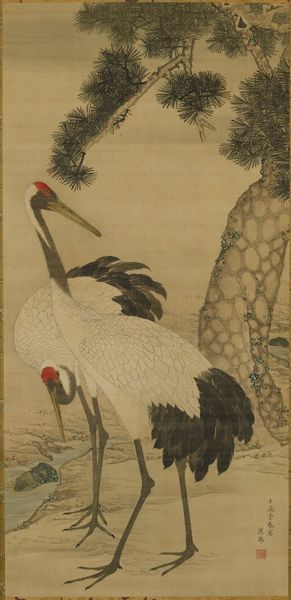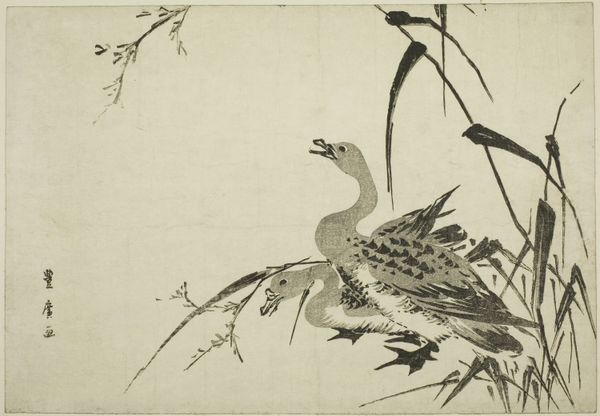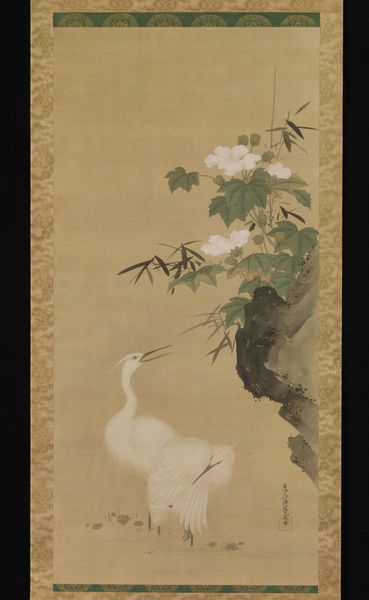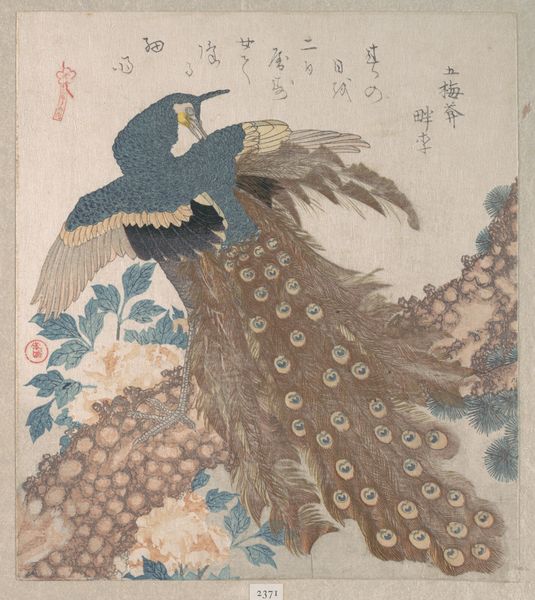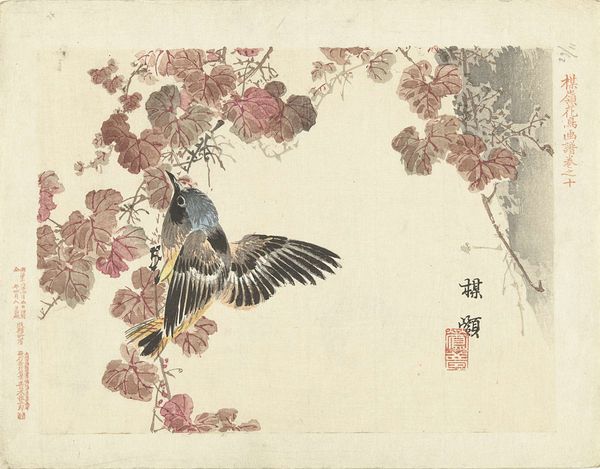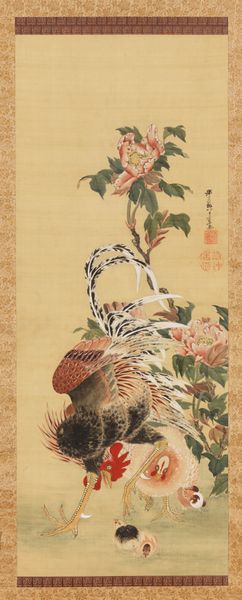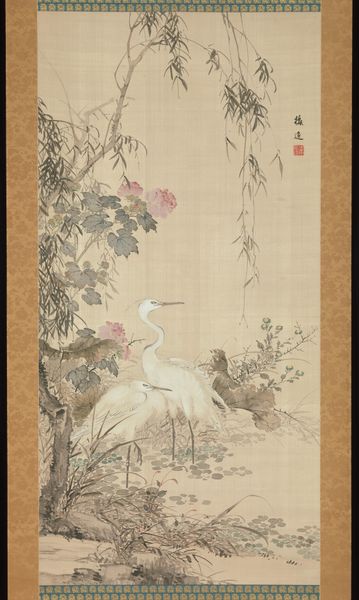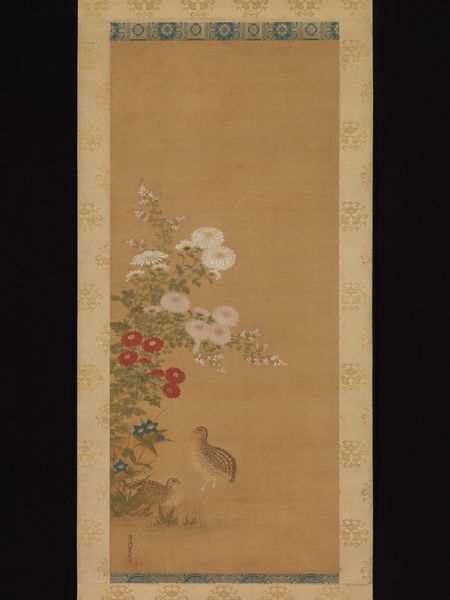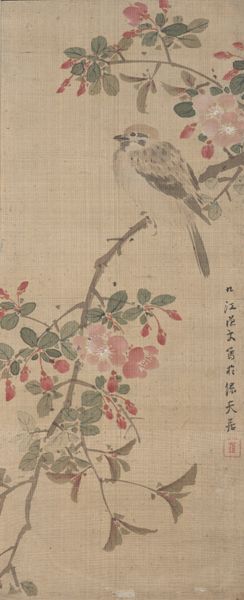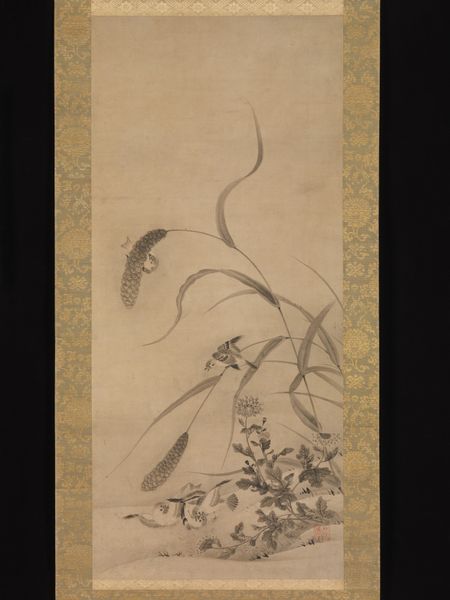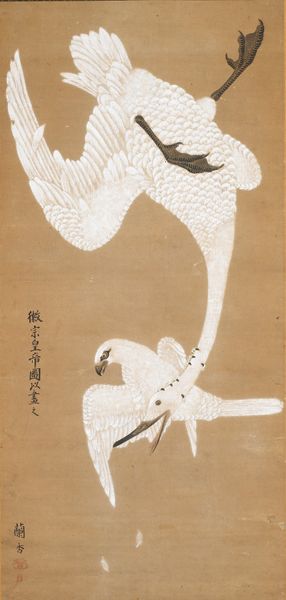
coloured-pencil, painting, watercolor, hanging-scroll, ink
#
coloured-pencil
#
water colours
#
painting
#
asian-art
#
landscape
#
ukiyo-e
#
japan
#
figuration
#
watercolor
#
hanging-scroll
#
ink
#
coloured pencil
#
coffee painting
#
realism
Dimensions: 35 5/16 × 13 9/16 in. (89.69 × 34.45 cm) (image)
Copyright: Public Domain
Watanabe Shōka painted this scroll of the Family of Cranes in nineteenth-century Japan, using ink and color on silk. Cranes in Japanese art are potent symbols, often representing longevity and good fortune. But the cultural significance goes deeper. During the Edo and Meiji periods, when Shōka was active, Japan experienced significant social and political change, shifting from feudalism to a more modern, industrialized society. Traditional artistic styles, like the depiction of birds and flowers, became a way to express cultural identity and continuity. The meticulous detail and elegant composition reflect the values of the literati, a class of scholars and artists who sought to preserve traditional culture amidst rapid modernization. Examining the artist's biography and the historical context reveals how art served as a commentary on Japan's evolving identity. We can better appreciate art's role in society and its connection to cultural values through period documents, literary sources, and studies of artistic patronage.
Comments
minneapolisinstituteofart almost 2 years ago
⋮
In addition to their role as symbols of longevity and vehicles for immortals, cranes, which mate for life, are also emblematic of familial loyalty. In this autumnal scene, a family of cranes gathers near parched reeds and reddening ivy. The painter, Watanabe Shōka, was born in Edo to the important painter and scholar Watanabe Kazan (1793–1841). After Kazan’s politically motivated suicide, the young Shōka took as his teacher his father’s leading pupil, the literati painter Tsubaki Chinzan (1801–1854), whose influence is apparent here.
Join the conversation
Join millions of artists and users on Artera today and experience the ultimate creative platform.
